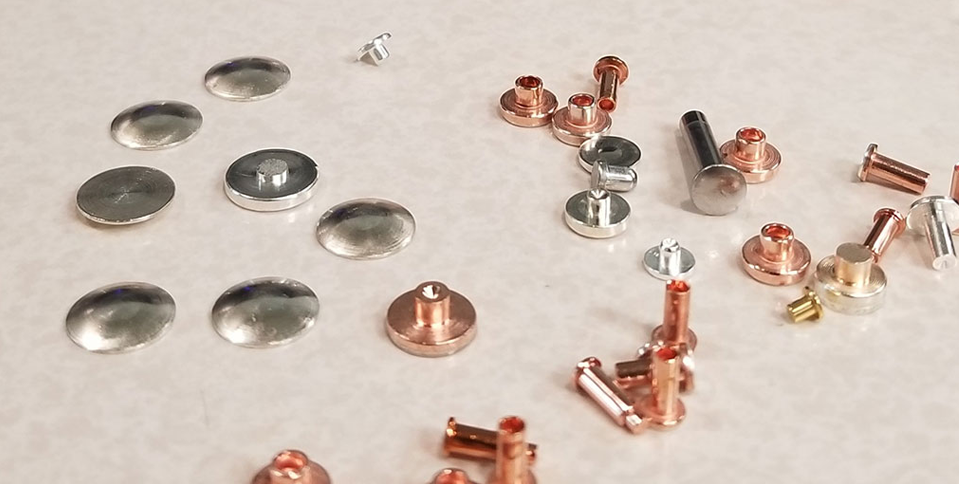-
Call us
262-947-0707
Call us
262-947-0707

When it comes to electrical contact selection for your switches, are you content to roll the dice? If so, you may be gambling with the reliability of your customers’ equipment. No one can afford to do that.
There are many factors you need to consider when sourcing electrical contacts for switches. Many of them require significant technical and metallurgical expertise. That’s why you shouldn’t go it alone. For best results, be prepared to discuss these design factors with your supplier to ensure you get the right electrical contact for your application. You need to make sure contact materials are compatible with electrical loads and environmental conditions.
Key question: How many cycles should the electrical contact last in your application?
Many factors can influence the expected life of an electrical contact. If current is arcing across it, it tends to clean the surface, helping to ensure excellent continuity. If there is no arcing, the contact is at the mercy of its materials, which may develop a contamination film or corrosion due to the environmental conditions to which the device is exposed. In addition, excessive current could cause the contact to weld closed or cause the contact to erode. If material cannot handle the current capacity for the application, erosion or welding will cause failure of the operating device.
Key question: How much heat is expected to build up within the current carrying members in the switch and how will it be dissipated?
If excessive heat builds up by the operating contacts in the device, the temper characteristics of the current-carrying members such as terminals and springs may be lost. If they lose their temper, bounce and shattering will cause total failure of the contacts and device.
In addition, the blade may become loose due to expansion and contraction. This may cause it to detach from the substrate and fail. That means you need to give careful consideration to the switch material. You need to ensure that it can handle the operating temperatures to which the switch will be exposed.
Key questions: What are the dynamics of the switch? What forces will be applied to it, such as the speed at which the contacts must open and close?
The life of contacts in the operating device may be shortened if its contacts open and close too quickly or too slowly. If the blade makes or breaks electrical contact too slowly, it may weld shut. Therefore, it’s critical to pick materials that do not weld to one another. If they open and close too fast, the blade can bounce, which can lead to material erosion of operating electrical contacts in the device.
The geometry of the contact can also influence its durability and reliability. A common switch design positions the electrical contact as a cantilever arm. The tip of the blade absorbs most of the force when the contact closes. If the cycle speed of the switch is too fast, the tip of the contact may shatter or causing material erosion of operating electrical contacts.
Key question: Can the electrical contact be designed so it can be manufactured consistently and affordably?
The materials used to make the electrical contact and its geometry can have a big impact on its manufacturability. This starts with material selection. Some metals and alloys are easier to form than others. Frequently, the electrical contact supplier specifies a bimetal design to reduce cost.
If the blade of the electrical contact is too thin, it may be hard to shape properly and consistently. In addition, the elasticity of the contact blade must be considered. How much can it deform during operation without compromising the operation of the switch?
As a switch gets smaller, so does the surface area of the electrical contact. That means it may not be able to dissipate heat as efficiently as a larger contact.
Rivet head thickness and shank diameter must also be considered. Some materials are harder to consistently form into a rivet head than others.
Unfortunately, no. The exact behavior of electrical contacts within a switch design can only be discerned through sampling and testing.
We can help you get the right electrical contact for your application. Ask us a question.